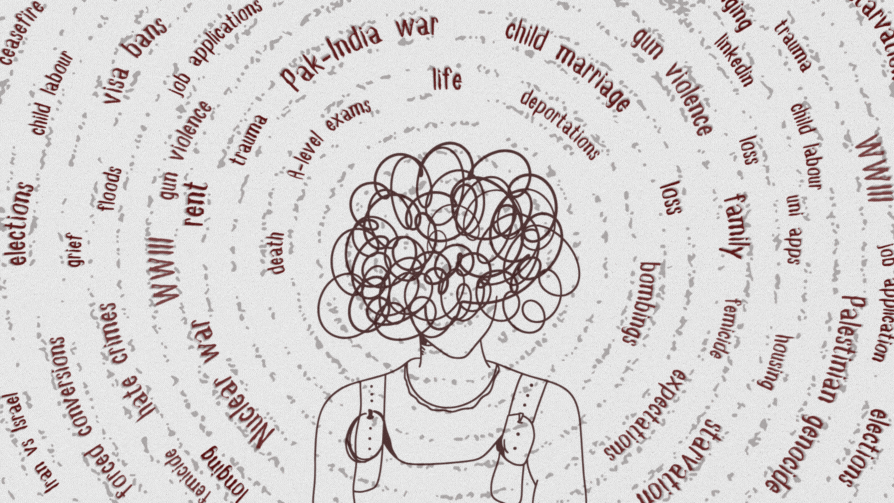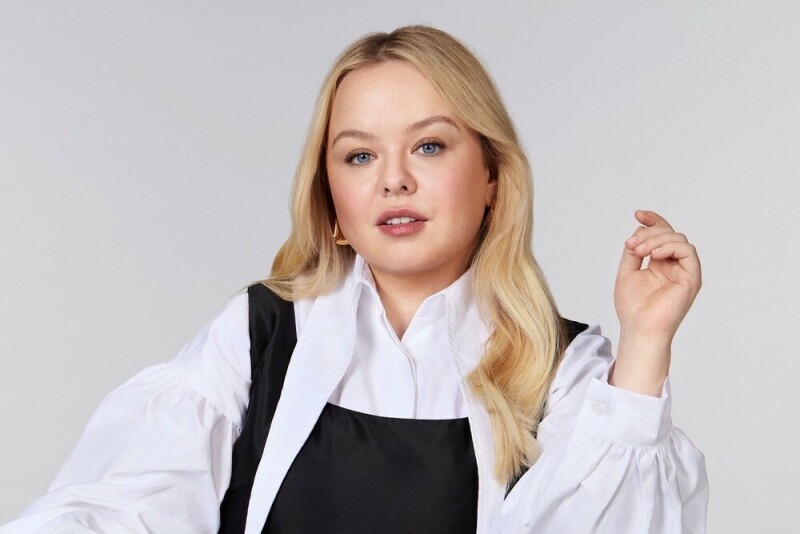Throwing a party? This all-Punjabi menu, featuring Mutton Pulao and Palak Gosht, is sure to be a hit
My mother always used to say that setting a menu for a meal is as important as making it.
A table spread of mismatched food items is quite the damper on the spirit of a hungry stomach. There were many a times that we would be heading home from a party and Ami would either observe that the menu was very well coordinated, or that the host had done a poor job of putting together the meal.
The menu must make sense, Ami maintained, and not only when entertaining guests, but also in everyday family meals.
I recently entertained a few friends for dinner. I put together the menu with great care, deciding to stick to a staple menu of a pulao, murgh masala, shami kabab, palak gosht, kathi daal, subzi, roti, salaad and raita.
I wanted the meal to be balanced, delicious and something that my wonderful guests would enjoy. Palak is always a hit with pulao, especially with a side of shami kabab.
The dinner was an expected hit, and not for its fanciness, but because the menu items sat together beautifully to make a wonderfully delicious meal over warm chit-chat and laughter.
The recipes I share with you today mostly come from my Nani’s kitchen, with the exception of khatti daal. Enjoy my menu. Here it is, from my kitchen to yours.
Mutton Pulao

The aromatic effervescence of fennel, coriander seeds and onions cooking in mutton yakhni (stock) makes pulao a delightful main course. The dish always transfers me to the time of wonder years when I thought my elders would live forever, sitting around a table of laughter, reprimands, family history lessons and character building.
Pulao is a universal and ancient food and has gathered many world cuisines in its embrace. History relays that the chef-d'œuvre of Persian kitchens was mutton and lamb pulao and it transformed to an elegant dish as it travelled from the campfires of hardened nomadic shepherds to the courts of the caliphs.
From ancient Persia, it spread far and wide to the entire Muslim world and beyond. When Babar arrived from Central Asia, he abhorred the sub-continent's cuisine. He was used to a hearty meat-based nomadic shepherds' meals, like the pulao. And so the pulao entered our region.
The cuisine of Pakistan and India may have central Asian, Turkish, Afghan and Persian roots, but we can't ignore that its nourishment and beauty was realised by the spices indigenous to the region. The sub-continental food is unique and has evolved over centuries to become what it has today — rich, vibrant, flavourful and elegant.
Ingredients
2¼ to 2½ lbs mutton, small pieces (preferably goat leg or shoulder meat)
1½ tbsp fennel seeds
3 tbsp coriander seeds
2 large onions
1 tsp garam masala powder
1 tsp cumin
¼ to ½ cup oil
8½ cups water
2 cups rice
Salt to taste
1½ tbsp yogurt
1 tsp fresh ginger (chopped)
1 tsp fresh garlic (chopped)
Method
1) Add mutton, fours quarters of one large onion, coriander seeds, fennel seeds, salt to taste and water in a cooking pot and bring the water to boil.
2) Reduce heat to medium until the mutton is cooked and stock (yakhni) is reduced to half its original quantity (4¼ mugs).
3) Remove mutton pieces from stock (yakhni) and strain stock thoroughly through sieve, discarding the drained fennel, coriander and onions.
4) In a large pot pour oil and brown thinly sliced onions.
5) Once the onions are golden brown, add mutton, ginger, garlic, garam masala powder, cumin, salt to taste and yogurt and stir on high heat for a few minutes.
6) Now add mutton stock and bring to boil on high heat, adding pre-washed rice.
7) Maintain high heat until the rice fluffs and the stock is just a thin layer on the top of the rice.
8) Taper heat to low and seal the pot, initiating the 'dum' method (steam cooking after sealing the pot).
9) Let sit on low heat for 30 minutes.
10) Remove lid. Your perfect pulao is ready to be enjoyed.
Palak Gosht

The Food and Travel Magazine says the following about spinach:
The first we heard of spinach in Britain was when King Richard the Second’s master cooks penned a simple recipe for it in England’s earliest cookery book. Wherever it originated from, everybody seemed to fall for its robust mineral flavours and versatility. In India and Persia its pungent taste was welcomed as the perfect base for the intensely spiced cuisine.
Nothing is more quintessentially Punjabi than saag; it’s a hearty food, abundant in flavour and nutrients, much like the land and the people it belongs to.
Ingredients
2 lbs goat meat (preferably leg meat)
Chopped spinach
1½ medium sized onions
2½ medium sized tomatoes
Oil to taste
1 tsp fresh ginger
1 tsp fresh garlic
Salt to taste
3 to 5 green chillies (sliced in half)
1 to 1½ tsp red chilli
½ tsp paprika
¼ tsp turmeric
1 tsp coriander powder
1 tsp cumin
½ to 1 tsp garam masala
10 to 12 black peppercorns
8 to 12 cloves
1 cinnamon stick
1 black cardamom
Chopped cilantro, green chillies, and chopped ginger for garnish
Method
1) In a pot, put together meat, chopped onions, chopped tomatoes and ginger garlic.
2) Cook for 10 to 15 minutes on medium to high heat until the meat releases water, stirring occasionally.
3) Now add powdered spices and salt; cook for a few minutes, adding oil, whole spices and green chillies.
4) Cook and stir on high heat until the stew is of a rich red hue and the oil separates from the meat, adding a little water (eyeballing the required amount) to the stew and leave to simmer until meat is almost tender.
5) Add in the spinach and let the meat and spices cook together until tender, with the oil sitting atop.
6) Garnish and serve with hot chappati, naan or boiled rice. I prefer it with boiled white rice.
Shami Kabab

Shami kabab is Pakistan’s favourite kabab, and mine too.
My earliest memory of stealing a taste of the shami kabab is right from the pot, just before the patty was made and fried, and that is the fun and versatility of shami kabab. It's delicious to steal and eat before it is put in a blender to give silkiness to its texture and fried to a fine finish.
Sanjay Thumma, celebrity chef and author, in his article 'Shammi Kabab' pens:
Shami or Shammi kabab literally means the Syrian kabab (Syria is called Sham in Urdu and Hindi) in Arabic. During the Mughal era, Muslim immigrants from the Middle East introduced this kabab to South Asia. The Mughals had employed cooks from all over the Muslim world to serve in the royal kitchens and some of the cooks were from Syria.*
Another source states that the word Sham is evening in Hindi and Urdu, and Sham-e-Awadh (evenings in Lucknow) during the days of the Nawabs were unforgettable. Some people also believe that Shami Kababs originate from the famous village of Sham Churasi in the Hoshiarpur district of Punjab.
Ingredients
1 kg ground beef, or beef chunk
1 ½ cup chana daal
1 ½ onions, large
1 inch piece of ginger
10 pods of garlic
12 whole red chilli
1 tsp cumin, heaped
2 tsp coriander powder
2 sticks cinnamon
3 black cardamoms
20 whole peppercorns
7 to 8 cloves
Salt to taste
24 to 30 ounces of water
Method
1) Put all ingredients (mentioned above) in a pot of water and let cook until water completely dries and lentils are cooked and soft to touch.
2) Let cool and grind until fine to touch.
3) Add 1 medium finely chopped onion, 2 eggs, 1 bunch of fresh coriander leaves (chopped) and 10 to 12 leaves of mint (chopped).
4) Mix well with ground beef mixture.
5) Form kababs and shallow fry.
Khathi Daal

I have, literally, grown up eating Hyderabadi khatti daal. My best friend Amber’s aayaa, whom we lovingly called Amma, was from Hyderabad Deccan and made khatti daal ever so often. Since I was mostly lost to be found at Amber’s house, when found I was usually holding a bowl of khatti daal in my hand.
Our household hardly ever served khatti daal, and I can't help but wonder how ethnic backgrounds play a significant role in determining our choices for daily cooking.
Not that there is anything wrong with it, but generally speaking we tend to stay within our safe zone when cooking in routine, and usually cook the foods we grew up around. It’s a habit one must try to step away from and make a concerted effort to whip up delicious recipes from other cuisines.
Ingredients
1 cup Masoor Dal or Toor Dal (I used Masoor or red lentils)
1 tomato
½ tsp fresh ginger
½ tsp fresh garlic
½ tsp turmeric
Red chilli powder to taste
Salt to taste
¾ tsp coriander powder
1 inch by 2 inch block of tamarind (soak in approximately 1 to 1 ½ cups hot water), let cool, rub/mix with hand to remove fiber/pulp from seeds.
Ingredients for fried garnish (bhagaar)
2 dried red chillis
2 green chillies, slit lengthwise
½ tsp cumin seeds
3 cloves garlic, chopped
3 to 4 curry leaves
Method
1) Wash lentils and soak in water for ½ hour.
2) Drain, rinse and add 3 to 4 cups water.
3) Bring to boil adding all ingredients, except tamarind.
4) Let cook, once tender add 1 cup (or to taste) of tamarind and let cook for ten to fifteen minutes, adding water for desired consistency.
5) Heat oil, adding garnish ingredients, temper for a few seconds and pour on dal.
6) Mix and serve with white rice, topping with cilantro.
Murgh Musallam

In the fabulous book Curry: A Tale of Cooks and Conquerors, Lizzie Collingham unveils that many of the Mughlai dishes and other delectable regional cuisines in the subcontinent may very well have resulted from many invasions and are an incorporation of world cuisines.
History tells the tale of Portuguese explorers and the arrival of Babar to the sub-continent and hence the cooking methods and ingredients of central Asia, Persia and Europe came to the exotic east.
Therefore, it's safe to say that it may have been the British who contributed their passion for roast chicken; and the sub-continental cooks mixed it with native spices such as cardamom and black pepper and gave us the Murgh Massallam.
Ingredients
1 whole chicken (approx. 3lbs)
2 green chillies
10 to 15 cloves of garlic
½ inch piece of ginger
1 tsp garam masala powder
pinch of turmeric powder
8 ounce yogurt
1 tsp red chilli powder
4 to 6 brown cardamom
8 to 10 cloves
1 piece cinnamon
8 to10 peppercorns
1 tsp cumin seeds
2 tsps coriander seeds
15 almonds
2 to 4 oz. oil (or to taste)
2 large onions
Salt to taste
2 to 4 oz. water
Freshly chopped coriander for garnish
Method
1) Blend ginger, garlic, yogurt, green chillies, salt, ½ tsp red chilli powder, turmeric and garam masala into a thick marinade for the chicken.
2) Marinate whole chicken, spreading masala inside the cavity and let rest in the fridge for 4 to 5 hours
3) Roast whole garam masala, cumin, coriander seeds and almonds and set aside.
4) In a large heavy pan or pot, heat oil and fry thinly sliced onions. Once golden brown, blend the strained onions with roasted spices, adding a little water if required.
5) In the same pan as used for frying onions, braise marinated whole chicken for a few minutes (saving the marinade for later use) and then remove and set aside.
6) Using the same pan heat a little oil and fry the onion paste on high heat, adding the rest of chilli powder, marinade, and salt if required.
7) Fry on high for a few minutes, adding the whole chicken and water, sealing with lid entirely and setting the heat to medium.
8) Let cook for 15 to 20 minutes on one side and 10 to 15 on the other.
9) Once the meat is tender, set in a platter pouring the masala on the top or side and garnish with greens. Serve with a side of your favourite vegetables and boiled eggs (both optional), hot naan and raita. I served it with a side of shallow fried peas, tomatoes, potatoes and bell pepper.
Truly a delectable meal, enjoy.
All photographs by the author













Comments